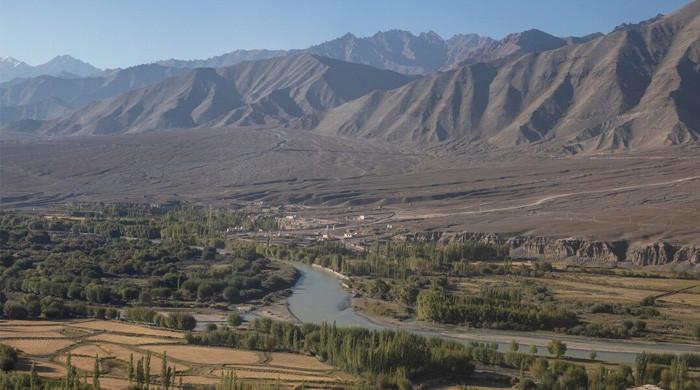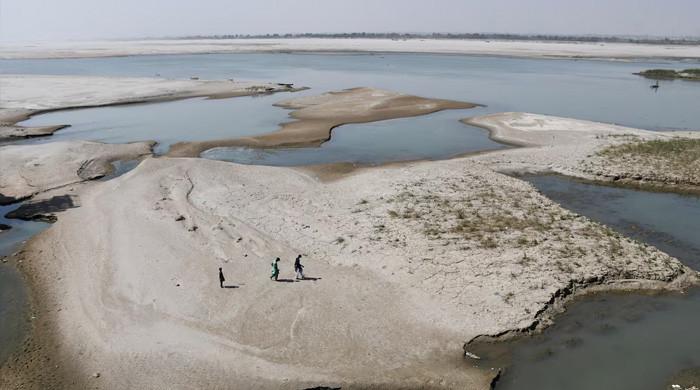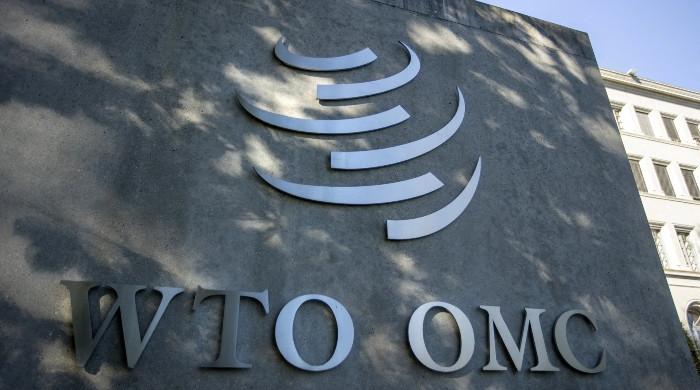Shrinking runway of Flight PK-1947
There are three tangible dynamics — demography, climate and technology — that are shrinking the runway
July 09, 2024

For years, both Pakistan’s most passionately patriotic daughters and sons as well as Pakistan’s most dyed-in-the-wool enemies have kind of grappled with the same question: how much more runway does Flight PK-1947 have?
The question isn’t necessarily soaked in any kind of normative framework; it’s really an analytical conundrum. The easy answer is that there is no answer: countries are extremely specific kinds of entities. Pakistan, within a category that lends itself to uniqueness, is in a league of its own. We don’t know how much more runway Pakistan has because we don’t know what airport we are at, and we don’t know where we are headed, or where we seek to land. This then would compel us to dig deeper into both a self-effacing historical inquisition and the nervous abyss of arguing over our feelings.
The harder answers are quantifiable, and they aren’t as abstract as whether we prefer Raja Dahir’s salt of the earth organic-ness versus whether we prefer the purity and fidelity of the faith-inspired Mohammad Bin Qasim (cheat code: it is possible and important to cling to both).
Runways aren’t abstractions though. And there isn’t as much room on a runway or in a cockpit — for feelings — as there should be in our baithaks, our cafes and our drawing rooms. There are three tangible dynamics — demography, climate and technology — that are shrinking the runway. And a host of uniquely obtuse associated challenges that may constitute other constraining factors on Flight PK-1947.
Demography, climate, and technology are the triple threat that make hard times catastrophic. Before we examine these further, there is one dynamic that we should perhaps relocate to a more appropriate place in the pecking order — lower. It takes up far too much of our immediate attention and has always done far too little to help us assess the length of the runway or the nature of the journey PK-1947 needs to take. This important (but distracting) dynamic of course, is the economy, stupid. In particular, macroeconomic indicators.
Macroeconomics may be a distraction for the pilots on PK-1947 because the fixation with current account and fiscal deficits, interest rates, exchange rates, and inflation is indicative of a reactive polity whose best parallel is with the obsessive and doting mother that keeps trying to reduce her child’s fever by reading the thermometer. Over and over and over again. It's 99. Now it's 99.3. Now it's 99.7. Oh no. Now it's 100. It's rising. It's 101. And on and on and on.
When a polity and society are in agony and suffering badly, this is an understandable reaction. It isn’t the right reaction, however. It ensures a fixation with trying to reduce the fever, and only reducing the fever. There is no moving on past the initial reaction, beyond the rising temperature, to an actual diagnosis. And there is no treatment plan of any kind, at all. There is no analysis of what kinds of support Eastern or alternative or holistic medicine could offer in the mid to long-term treatment of the condition. There is no nutritionist. No dietician. No physiotherapist. No mental health support. There are no second, third, or fourth opinions.
There is just the obsessive, mind-numbing fever-pitch of the symphony of macroeconomic indicator lament. We may be tackling multiple stage IV cancers with a national song and dance in which the virtue signaling through the ability to read the temperature on the thermometer has itself become the virtue itself. Just take a quick scan of the most reasonable political personalities and commentators whose voices are respected: it is a parade of competent, and often brave voices telling us what everyone knows because everyone (including the rich) is living through it day after day, week after week, month after month: the economy is bad. Well, gee whiz.
No wonder budgets like the one that has just been passed keep finding the light of day. Innocent and gullible Pakistanis wonder at just how international organisations can abide by such cruelty — often not realising that this cruelty is being visited upon the people of Pakistan because of the decisions made by our elders, institutionally, politically, economically and socially. People keep protesting the use of the word "elite" because elites don’t like being spoken to like this. So let’s call the elites what they really are in the Pakistani ethos. They are our "elders". Our baray. Baray loug. Baray buzurg. Baray idaray. Baray ohdey.
For decades, there was no real runway conversation on flight PK-1947. The baray were not particularly nice, or good, or virtuous but they were able to extract rents from the non-elites without sinking the boat (I switch metaphors from planes to boats, in part because of the more accessible trauma we associate with ill-fated airplane rides). But something about this latest ride on the merry-go-round is different. That difference is the cumulative effects of demography, climate and technology.
Look, Pakistan is going to get another International Monetary Fund (IMF) programme, and eventually it might even start to tax the rich, but the agonising path to each new IMF-China-KSA-UAE rescue programme and the unthinkably twisted logic and rationale for continued pay raises for public-sector employees and pensioners, and substantially reduced real incomes for everyone else — this is feeling less and less sustainable through each iteration of this circus. It is demography, climate and technology that are doing this. All three are inescapable; they are tuned to time, not whim. And by time, I don’t mean what you read on the clock. I mean, Surah Al Asr. Read it.
Time is unstoppable. Whims like three-year postings, five-year terms, or rigorous imprisonment come and go. Time is unstoppable. This simple and most fundamental of misconceptions in the minds of Flight PK-1947’s pilots is the source of a lot of the pain Pakistanis are going through. Demography, climate and technology cannot be shut down; they are tuned to time. There is no kill switch for demographic change. There is no shutdown mechanism for climate change. There is no reverse gear world without technology.
Demography, climate and technology are shrinking the runway. In the simplest terms: it’s crowded, it’s hot, and on the #FlightPK1947 WhatsApp group, everyone is fighting (cheat code: that’s what social media voice amplification and connectivity is programmed to do).
There is an exodus of Pakistani talent on other flights, of other airlines — opting out of Flight PK-1947. The pool of human capital left behind is less capable of flight. Remember: it is hot and still very crowded. Thanks to the transformation of human socialisation through social media, the thing we used to call political discourse is now a shouting match between those with the least scruples. People lament the race to the bottom of the barrel in the digital age, not realising this is the thing that the algorithms of technology companies need to survive. Yet despite all this, hotter places with more people and as many or more WhatsApp groups seem to be doing okay. In the midst of war and misery, they even manage to have macroeconomic indicators that aren’t feverish.
This is because as much as unmitigated and unattended to demographics, climate change and technological adoption can shrink a country’s runway like they have for Pakistan, well-managed demography, well-curated climate change adaptation and mitigation, and well-manicured technology can help build wider runways, more airports and put Flight PK-1947 on a path that has many, many destinations catering to its Whitmanesque grandeur: large and full of contradictions. But with Fitzgeraldian oomph: with many places to go.
Charting a different path and plan for Flight PK-1947 is a decision that only the pilots — our elders, our baray — can take. This may be seen as subservience to an entrenched and callous elite that has thus far demonstrated no capacity to recognise the depth of the Pakistani polycrisis, but it may also be seen as a recognition of reality. The important thing is that the runway is indeed shrinking. In a sea of abstractions, this certainty should be a source of both alarm and of hope.
The writer is an analyst and commentator.
Disclaimer: The viewpoints expressed in this piece are the writer's own and don't necessarily reflect Geo.tv's editorial policy.
Originally published in The News











